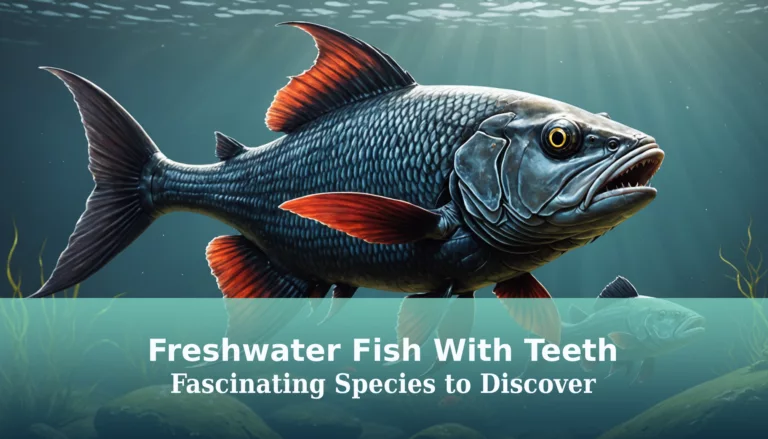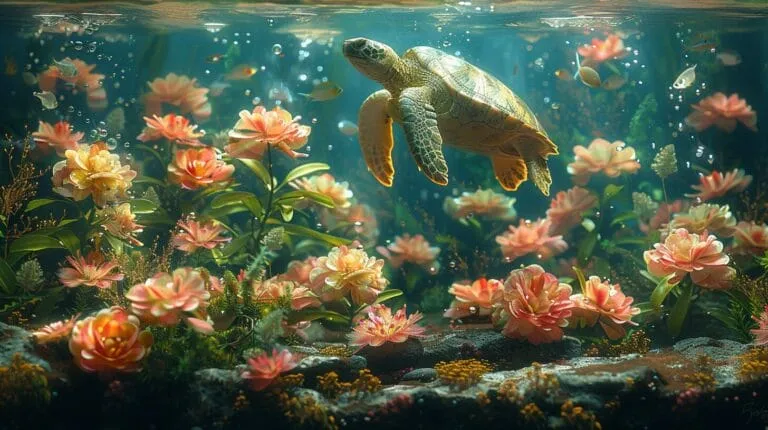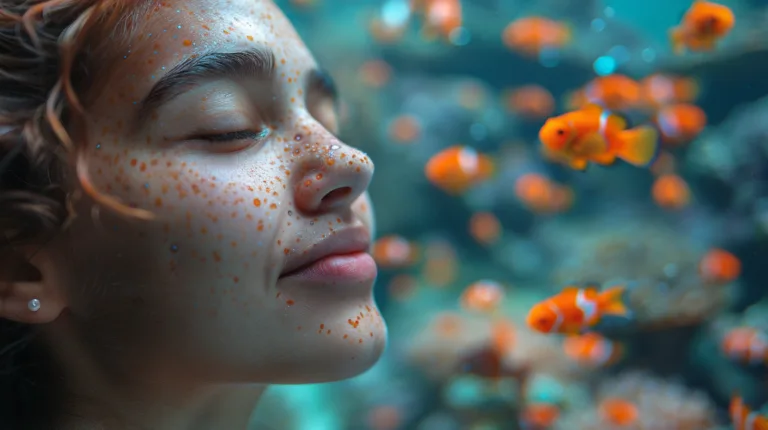Red clawed crabs need more than just fish food. Many stores sell them as freshwater pets, but that’s wrong. 1 These crabs need both land and water to live well. They also need special food to stay healthy.
I’ve kept aquariums for years. I know how to care for these unique crabs. In this guide, you’ll learn the right red clawed crab food. You’ll also find out how to set up the perfect home for them. 2 Get ready to become a crab care expert! 3
Key Takeaways
- Red claw crabs need brackish water with a specific gravity of 1.005 to thrive.
- Feed crabs a mix of shrimp pellets, veggies, and frozen foods 2 to 3 times a week.
- Provide a 10-gallon tank with a 3:1 water to land ratio for each crab.
- Keep water temp between 70°F and 88°F with a pH of 7.2 to 8.5.
- Red claw crabs can live up to 2.5 years with proper care and diet.
Understanding the Habitat of Red Claw Crabs

Red claw crabs thrive in brackish water habitats. You’ll need to mimic their natural home in your tank setup.
Natural Habitat and Behavior of Red Claw Crabs
Red claw crabs thrive in warm coastal mangrove swamps of Asia. These tiny creatures love brackish waters found in estuaries. Their natural home has a mix of fresh and salt water. In the wild, they spend time both in water and on land. They hide among tree roots and rocks during the day.
At night, these crabs come out to explore. They’re shy and like to keep to themselves. But they can get mean if another crab steps into their space. These little guys only grow up to 4 inches wide.
They live for about 2.5 years in the right conditions. Red claw crabs are great climbers and can easily scale tank walls. 1
Ideal Aquarium Setup for Red Claw Crabs
Now that you know about their natural habitat, let’s set up the perfect home for your red claw crabs. Creating an ideal aquarium setup is key to keeping these unique creatures happy and healthy.
- Tank size: Use a 10-gallon tank or larger for your red claw crabs. 3
- Water type: Fill the tank with slightly brackish water (SG 1.005).
- Temperature: Keep the water between 70°F and 88°F.
- pH level: Maintain a pH between 7.2 and 8.5.
- Substrate: Use sandy substrate that crabs can dig in.
- Filtration: Install a canister or in-tank filter for clean water.
- Hiding spots: Add driftwood, rocks, and plants for shelter. 2
- Land area: Create a 3:1 water to land ratio with built-in shelves.
- Climbing options: Place sturdy items for crabs to climb on.
- Lighting: Provide moderate lighting to mimic their natural habitat.
- Water changes: Do 10% water changes weekly to keep the tank clean.
Importance of Brackish Water for Their Health
Your red claw crabs need brackish water to thrive. A mix of fresh and salt water mimics their natural habitat. Add about a teaspoon of marine salt per gallon to reach the right salinity (SG 1.005). This keeps their shells strong and helps them breathe better. Freshwater alone can shorten their lives. 4
Test the water often to maintain proper mineral levels. Brackish conditions prevent drowning and support healthy molting. Your crabs will be more active and colorful in the right environment. Keep the salinity stable for happy, long-lived pets.
Essential Food Options for Red Claw Crab Care

Red claw crabs love a varied diet. You’ll need to offer them a mix of plant and animal foods to keep them healthy.
Best Food Choices for Red Claw Crabs
Red claw crabs thrive on a varied diet in aquariums. Here are the best food choices to keep your crustacean friends healthy and happy: They enjoy a mix of protein-rich foods like brine shrimp, bloodworms, and small pieces of fish or shrimp. For added variety, you can incorporate plant-based options such as algae wafers or blanched vegetables like zucchini and spinach. Additionally, some aquarium owners even explore dinosaur eel food options, which can include sinking pellets or meaty treats, as a supplement to their diet.
- Shrimp pellets: These provide essential nutrients and are easy to feed. 5
- Granules: Offer a balanced mix of proteins and vitamins for crabs.
- Fish food: Sinking varieties work well for bottom-feeding crabs.
- Frozen bloodworms: A protein-rich treat crabs love. 5
- Vegetables: Blanched spinach or zucchini add fiber to their diet.
- Calcium supplements: Crucial for shell health and growth.
- Algae pellets: Mimic natural grazing habits of crabs. 6
- Brine shrimp: A tasty source of protein and minerals.
- Smashed snails: Offer both meat and calcium from shells.
- Shredded marimo balls: A unique food that crabs enjoy.
Remove uneaten food after 1 to 2 hours to keep the tank clean. Next, we’ll explore the nutritional needs of crustaceans in aquariums.
Nutritional Needs of Crustaceans in the Aquarium
Crabs need a mix of foods to stay healthy. You should give them algae, plant matter, and small bits of meat. These foods match what they eat in nature. Offer them sinking pellets, frozen foods, and fresh veggies. This variety helps them get all the nutrients they need. 7
Calcium is key for crab health. It helps them build strong shells when they molt. You can add cuttlebone or calcium supplements to their diet. Feed your crabs small amounts often, about 2 to 3 times a week.
Remove any uneaten food after an hour to keep the tank clean. This feeding plan keeps your crabs well-fed and your tank in good shape.
How to Feed Red Claw Crabs in a Community Tank
Feeding red claw crabs in a community tank requires careful planning. You need to balance their diet while keeping other tank mates safe.
- Offer sinking foods: Use shrimp pellets or fish flakes that sink to the bottom. 5
- Add veggies: Give spinach, peas, or squash for extra nutrients.
- Time feedings: Feed when other fish are less active to reduce competition.
- Use feeding dishes: Place food in small dishes to keep it contained.
- Monitor portions: Give only what crabs can eat in 1 to 2 days.
- Remove leftovers: Take out uneaten food after 1 to 2 hours to keep water clean.
- Provide calcium: Add supplements to the water for healthy shells.
- Vary the menu: Mix up food types to ensure a balanced diet.
- Avoid overfeeding: Too much food can harm water quality.
- Watch for aggression: Keep an eye on crabs during feeding times.
- Use tongs: Long tweezers help place food in hard-to-reach spots.
- Create feeding zones: Set up areas away from other fish for crab meals.
Now let’s explore the lifespan and growth of these unique creatures in your aquarium.
Lifespan and Growth of Red Claw Crabs

Red claw crabs can live up to 2.5 years with proper care. Their growth depends on diet, tank conditions, and stress levels. Want to know how to help your crab thrive? Keep reading!
Factors Affecting the Lifespan of Red Claw Crabs
Red claw crabs live up to 2.5 years in good conditions. Their lifespan depends on water quality, diet, and stress levels. These crabs need slightly brackish water with a specific gravity of 1.005.
Keep the tank between 70°F and 88°F for best results. Regular water changes help remove harmful waste. Feed your crabs a mix of plant matter and protein-rich foods. Avoid overcrowding the tank, as this can lead to fights and injuries.
Proper care includes a strong filtration system and hiding spots. Crabs feel safe with driftwood and rocks to climb on. Use sand as substrate to mimic their natural habitat. Test water parameters often to catch issues early.
Salinity levels must stay stable to prevent stress. With the right setup and care, your red claw crabs can thrive for years. 8
How to Promote Healthy Growth in Your Red Claw Crabs
Red claw crabs need proper care to grow well. Here are key tips to boost their health and growth:
- Provide a 10-gallon tank with sandy substrate
- Keep water temp between 70°F – 88°F
- Add marine salt for brackish water
- Feed shrimp pellets and algae wafers 5
- Offer veggies like spinach or zucchini
- Give calcium supplements for shell health 5
- Create hiding spots with rocks or plants
- Do 10% water changes weekly
- Test water often to keep it clean
- Add silk plants to prevent uprooting
These steps help your crabs thrive. Next, we’ll look at signs of a healthy red claw crab in your tank. 4
Signs of a Healthy Red Claw Crab in the Aquarium
Healthy red claw crabs show bright colors from red to orange with brown spots. Their eyes stay clear, and all limbs remain intact. These crabs move actively, though they tend to be shy and nocturnal.
A good appetite is key – they’ll eat a varied diet eagerly. Watch for regular molting, which helps them grow. The old shell gives them needed calcium. Check their shells often for proper growth and no signs of rot. These traits point to a thriving crab in your tank. 8
Choosing Tank Mates for Your Red Claw Crabs

Picking good tank mates for your red claw crabs is key. You’ll want to choose fish that can live in brackish water and won’t bother your crabs.
Compatible Fish and Invertebrates for a Community Tank
Red claw crabs can live with other aquatic animals in a community tank. Here’s a list of compatible tank mates:
- Neon Tetras: These small, fast-swimming fish are great companions. They stay in the upper parts of the tank, away from the crabs.
- Guppies: Colorful and quick, guppies make good tank mates. Their speed helps them avoid crab claws.
- Mollies: These hardy fish adapt well to brackish water. They’re active swimmers and can coexist with red claw crabs.
- Flagfish: These peaceful fish are suitable for brackish tanks. They swim in the middle to upper levels, keeping clear of crabs.
- Larger Gobies: Some goby species can handle brackish water. They often stay near the bottom but are quick enough to avoid crabs.
- Nerite Snails: These algae-eaters are tough and can survive in brackish water. Their hard shells protect them from crab attacks.
- Ghost Shrimp: Small and fast, ghost shrimp can share space with red claw crabs. They help clean the tank too.
- Amano Shrimp: Larger than ghost shrimp, Amano shrimp are less likely to be eaten by crabs. They’re also good algae eaters.
- Malaysian Trumpet Snails: These snails burrow in the substrate, helping to keep it clean. Their shells protect them from crabs.
- Bumblebee Gobies: Small and cute, these fish do well in brackish water. They’re bottom dwellers but can avoid crab claws. 9
Red claw crayfish are unlikely to harm your fish. They thrive in environments with areas to climb out of the water, such as pieces of bog wood. 10
Potential Aggressive Behaviors to Monitor
Red claw crabs can get feisty. They often raise their claws when they feel threatened. You might see them fight over food or space. 4 Males get extra aggressive during mating season. They may attack each other or smaller tank mates.
Keep an eye out for chasing, pinching, or cornering behaviors. 4 Provide lots of hiding spots and enough room for each crab. This helps reduce fights. If aggression persists, you may need to separate problem crabs. Regular checks on your tank will help spot issues early.
Best Practices for Introducing New Tank Mates
Adding new tank mates to your red claw crab habitat needs care. Follow these steps to ensure a smooth transition:
- Research compatibility: Check if the new species can live with red claw crabs. Some fish and invertebrates work well, while others may cause problems.
- Prepare the tank: Create hiding spots and territories for both old and new residents. This helps reduce stress and aggression.
- Gradual acclimation: Slowly introduce new tank mates to the water. This process can take 30 to 60 minutes and helps them adjust to new conditions.
- Time it right: Add new creatures during low activity periods. Early morning or late evening often works best. 9
- Monitor closely: Watch interactions for the first few days. Look for signs of stress or aggression among all tank inhabitants.
- Keep water balanced: Test and maintain proper water parameters. This helps all creatures stay healthy during the change.
- Introduce in groups: For schooling fish, add them in small groups. This makes them feel safer and less likely to be picked on.
- Feed separately: Offer food in different areas of the tank. This reduces competition and helps new tank mates settle in.
- Have a backup plan: Keep a separate tank ready in case you need to remove any stressed or aggressive animals quickly.
- Be patient: Allow time for all creatures to adjust to their new living situation. It may take a few weeks for everyone to settle in fully.
Optimizing Care for Your Red Claw Crabs

Red claw crabs need special care to thrive. Keep their tank clean and give them the right food to help them live longer.
Future Trends in Keeping Red Claw Crabs in Aquariums
Aquarium tech is changing fast for red claw crabs. New filters clean water better, making it easier to keep the right mix of fresh and salt water. Smart devices now track water quality and alert you if something’s off.
This helps keep your crabs healthy without constant testing. 4Crab-friendly tank designs are on the rise. These setups have built-in shelves and hiding spots that mimic the crabs’ natural homes. Some even include special areas for the crabs to climb out of the water. This matches their need to spend time both in and out of water, just like in the wild.
Final Tips for Maintaining a Vibrant Red Claw Habitat
Red claw crabs need special care to thrive in your tank. Here are key tips to keep your crab habitat vibrant:
- Keep water slightly salty. Add marine salt to reach a specific gravity of 1.005. 5
- Use a big tank. Give each crab at least 10 gallons of space. 5
- Create hiding spots. Add rocks, driftwood, and plants for shelter.
- Use sandy substrate. Crabs love to dig and burrow in sand.
- Change water often. Replace 10% of the tank water weekly.
- Check water quality. Test pH and salinity levels regularly.
- Secure the tank lid. Red claws are great climbers and can escape.
- Avoid male fights. House only one male crab per tank. 4
- Offer varied diet. Feed algae pellets, sinking fish food, and veggies.
- Maintain temp. Keep water between 70°F to 88°F for crab comfort.
Conclusion
Caring for red claw crabs is rewarding. You’ll enjoy their unique behaviors and vibrant colors. Feed them a varied diet of shrimp pellets, veggies, and frozen foods. Create a brackish setup with land areas for their health.
With proper care, your red claw crabs will thrive in your aquarium for years.
FAQs
1. What do red clawed crabs eat?
Red clawed crabs are omnivores. They eat algae pellets, sinking fish food, and plant leaves. These little creatures also like to scavenge for food at the top of the tank.
2. How often should I feed my red clawed crab?
Feed your crab small amounts daily. Don’t overfeed – they’ll eat anything you give them. A 3 to 1 mix of veggies to protein is best. Remove uneaten food to keep the water clean.
3. Can red clawed crabs live in freshwater?
No, they’re often sold as freshwater pets, but that’s wrong. They need brackish water – a mix of fresh and ocean water. Add some marine salt to their tank for the right conditions.
4. How do I set up a tank for red clawed crabs?
Use a marine filtration system and sand substrate. Add built-in shelves or landmass for climbing. Silk plants work well. Ensure they have access to both water and air, as they can dehydrate quickly.
5. Are red clawed crabs aggressive?
Yes, they can be. They’re known to fight, especially males. Keep one crab per 5 gallons to reduce aggression. Provide hiding spots so they feel safe when scared.
6. How do I keep my red clawed crab healthy?
Do regular water tests and 10% water changes weekly. Cycle the water efficiently. Keep the temperature between 75-85°F. Watch for changes in color or behavior – they’re sensitive to water quality.
References
- ^ https://www.animalspot.net/red-claw-crab.html
- ^ https://www.wikihow.com/Set-Up-a-Tank-for-Your-Red-Clawed-Crab
- ^ https://www.aquariumsource.com/red-claw-crab/?srsltid=AfmBOor88xy8dfteKdGL3k1XU1V8H4cYkTfMa21b7RwHWalhpbgmYdc5 (2022-06-11)
- ^ https://aqualandpetsplus.com/red-claw-crabs/ (2024-03-26)
- ^ https://aquariumbreeder.com/red-claw-crabs-detailed-guide-care-diet-and-breeding/
- ^ https://www.nano-reef.com/forums/topic/395301-feeding-my-red-clawed-crabs/
- ^ https://turtleaffairs.wordpress.com/2012/03/24/red-claw-crab-care-sheet/ (2012-03-24)
- ^ https://www.aquariumforum.com/threads/red-claw-crab.3464/
- ^ https://www.aquariacentral.com/forums/threads/tank-mates-for-red-claws.110466/ (2007-05-18)
- ^ https://www.fishforums.com/threads/crabs.27467/





